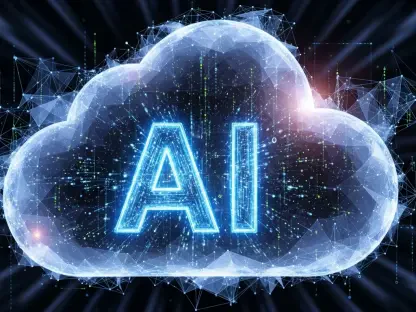Setting the Stage for AI in Software Development
Imagine a world where nearly 90% of technology professionals rely on artificial intelligence to craft code, yet only a fraction truly trust the output, revealing a striking dichotomy that defines the current landscape of software development. AI has emerged as both a powerful ally and a complex challenge, reshaping how developers work by promising unprecedented productivity gains while exposing underlying organizational vulnerabilities. This report delves into the nuanced impact of AI, drawing on comprehensive insights from a global survey of nearly 5,000 professionals to illuminate the state of the industry.
The software development sector stands at a pivotal moment, with AI adoption becoming almost universal. Major players in technology are driving innovation, embedding AI into workflows to streamline processes and enhance capabilities. However, beneath the surface of this rapid integration lies a tension between efficiency and reliability, prompting a deeper examination of how AI influences practices across the board.
This analysis is grounded in a landmark study released this year, offering a snapshot of AI-assisted development through the eyes of thousands of practitioners worldwide. It aims to unpack the transformative potential of AI while also addressing the hurdles that threaten to undermine its benefits, setting the stage for a detailed exploration of trends, challenges, and future directions.
AI’s Role and Reach in the Industry
Current State of Integration
AI’s presence in software development is no longer a novelty but a near-standard practice, with adoption rates soaring to almost 90% among technology professionals. Tools powered by AI are being utilized for a range of tasks, from generating code to debugging, fundamentally altering traditional workflows. Leading tech giants and innovative startups alike are fueling this shift, pushing the boundaries of what automated systems can achieve in coding environments.
The impact of this widespread adoption is profound, reshaping timelines and expectations within development teams. AI is not merely a tool but a catalyst that accelerates certain processes, often outpacing manual efforts by significant margins. Yet, this rapid integration also brings to light questions about consistency and the long-term effects on skill development among programmers.
A recent global survey of nearly 5,000 industry professionals provides a critical lens through which to view these changes. It highlights how AI is redefining efficiency while also pointing to gaps in trust and stability that accompany such a transformative shift, paving the way for a deeper dive into specific trends and data.
Key Trends and Developer Sentiments
Among the most notable trends is the near-universal reliance on AI tools, with over 80% of developers reporting tangible productivity boosts. This surge in efficiency is often attributed to AI’s ability to handle repetitive tasks, allowing teams to focus on more strategic aspects of projects. However, alongside these gains, a significant trust barrier persists, as only 33% of developers express confidence in AI tools, with a mere 3% indicating high trust.
This trust gap manifests in varied perceptions, particularly around the accuracy of AI-generated code. Despite 59% of professionals noting improvements in code quality, skepticism remains about the dependability of outputs, leading to a cautious approach in deployment. Such a dichotomy underscores the complex relationship developers have with AI, balancing appreciation for speed against concerns over reliability.
Emerging behaviors further complicate this landscape, with 71% of surveyed professionals using AI to write new code. This reliance signals a shift toward automation in core development activities, raising questions about how skills and expertise evolve in an AI-driven era. These insights reflect a broader narrative of opportunity tempered by caution, shaping the industry’s trajectory.
Performance Data and Organizational Effects
Delving into performance metrics, the data reveals a mixed picture of AI’s influence on software delivery. While throughput has seen marked improvement, there has been a noticeable rise in delivery instability since the advent of generative AI tools. This instability often translates into challenges with product quality, as accelerated processes sometimes outstrip the capacity for thorough validation.
Organizations are grappling with these dynamics, as the push for speed can exacerbate existing weaknesses in systems and workflows. The findings suggest that without robust mechanisms to manage AI-driven development, the risk of errors and inefficiencies increases, impacting overall performance. This tension highlights the need for strategic oversight to align AI capabilities with stable outcomes.
Looking ahead, the data points to potential pathways for improvement, particularly through structured organizational practices. Projections indicate that firms investing in systemic capabilities could mitigate instability over the next few years, from this year to 2027, fostering environments where AI enhances rather than disrupts delivery. Such forward-thinking approaches are critical for harnessing the full potential of AI in development settings.
Obstacles Intensified by AI Adoption
The integration of AI in software development has not been without significant hurdles, amplifying existing challenges within the industry. A glaring trust deficit stands out, with only a small fraction of developers—around 3%—expressing high confidence in AI outputs. This pervasive skepticism often stems from concerns over accuracy and the potential for undetected flaws in automated code, necessitating rigorous verification processes.
Beyond trust, the rise in software instability poses a substantial threat to product quality. As teams lean on AI to expedite delivery, the incidence of errors and system disruptions has climbed, particularly in environments lacking strong oversight. This trend reveals a critical flaw in the assumption that speed inherently equates to progress, as rushed outputs can compromise reliability and end-user satisfaction.
Additionally, AI tends to magnify organizational dysfunctions, especially in teams already struggling with process or cultural issues. In such settings, the introduction of AI can intensify breakdowns, leading to heightened stress and reduced performance. Addressing these amplified challenges requires a multifaceted approach, including systemic reforms and enhanced training to build resilience against AI-related pitfalls.
Essential Frameworks for Leveraging AI
Maximizing the benefits of AI in software development hinges on robust organizational frameworks and systemic practices. A staggering 90% of organizations have adopted platform engineering, creating internal systems that provide guardrails and shared capabilities for AI deployment. These platforms are vital for scaling benefits, ensuring that AI tools integrate seamlessly without destabilizing existing workflows.
Complementing this is the role of value stream management, which helps translate individual productivity gains into broader organizational success. By aligning AI-driven improvements with overarching goals, firms can avoid fragmented outcomes and build cohesive strategies. The emphasis on such practices underscores that AI’s value is not in isolated usage but in its integration within a well-structured ecosystem.
Further guidance comes from a model outlining seven essential practices for AI success, spanning team and organizational levels. These include establishing clear policies, fostering healthy data environments, and prioritizing user-centric design in tool development. Such systemic requirements are crucial for addressing trust and instability concerns, paving the way for sustainable AI adoption across the sector.
Projecting AI’s Path in Development
Looking toward the horizon, the trajectory of AI in software development appears poised for further evolution, driven by emerging technologies and practices. Innovations in machine learning and automation are likely to refine AI tools, potentially addressing current limitations around accuracy and trust. As these advancements unfold, they could reshape how developers interact with AI, fostering greater confidence over time.
Potential disruptors, such as shifting developer perceptions and regulatory changes, may also influence adoption rates. If trust continues to lag, organizations might face slower integration, necessitating proactive measures to build credibility in AI systems. Conversely, positive shifts in sentiment could accelerate usage, amplifying AI’s role in transforming development methodologies.
Drawing parallels with historical technology shifts, such as the move to cloud infrastructure, systemic investments are expected to be key drivers of future growth. Organizations that commit to restructuring operations and prioritizing cultural health stand to gain the most from AI. This long-term perspective suggests that sustained effort and adaptability will define success in an increasingly AI-centric landscape.
Reflecting on Insights and Next Steps
The exploration of AI’s impact on software development, as captured in this comprehensive study, paints a picture of an industry at a crossroads. It highlights the dual nature of AI as both a booster of productivity and a revealer of systemic flaws, with findings that underscore the critical need for more than just tool adoption. The data and trends provide a clear view of where challenges like trust and instability have taken root.
Moving forward, organizations are urged to focus on building robust platforms and clear policies to support AI integration. Investing in cultural health and training emerges as vital steps to mitigate amplified dysfunctions and ensure team well-being. These actions aim to create environments where AI can truly enhance rather than disrupt.
As a final consideration, the industry is encouraged to explore innovative verification methods and data ecosystems to address lingering trust issues. By prioritizing systemic transformation over quick fixes, firms can position themselves to lead in an AI-driven future. This strategic focus offers a pathway to not only navigate current complexities but also unlock new avenues for growth and efficiency.









